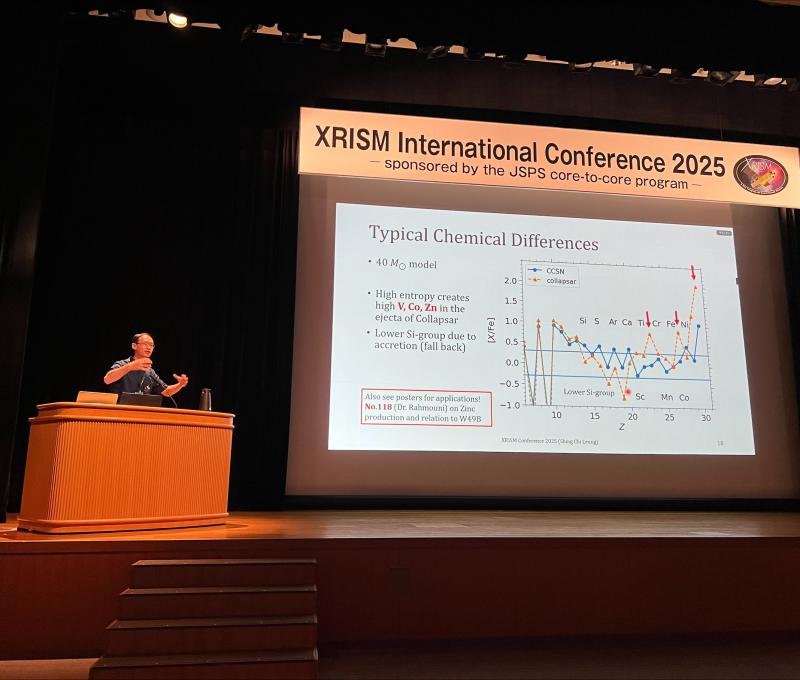Professor Fariborz Publishes “Non-inertial torques and the Euler equation” in European Physical Journal Plus

Professor Amir Fariborz published, “Non-inertial torques and the Euler equation” in European Physical Journal Plus:
Classical mechanics is the framework for studying motion of objects under the influence of forces. Its domain of applicability is limited to the macroscopic world (i.e. not applicable in the atomic/subatomic world) and to motion of objects with speeds much smaller than the speed of light. The seeds of what is now known as classical mechanics were planted several centuries BC (or perhaps even before that) with ideas put forward by great minds such as Greek philosopher Aristotle (381-322 BC), upon which further progress was made throughout the history of the subject such as during the medieval times by Persian philosopher Avicenna (908-1037) and further evolution of these ideas through works of unique thinkers like Galileo (1564-1642) and Kepler (1571-1630) which ultimately led to its completion by Sir Isaac Newton (1642-1726) in the form of the Newton’s laws of mechanics, a subject that is now commonly taught in high schools and universities around the world. Remarkably (but not surprisingly), to be able to apply the laws of mechanics, Newton had to also develop the method/art of incremental calculation which is now known as calculus. Classical mechanics is an imperfect theory and gets generalized by Einstein's theory of relativity and by the quantum theory. Nevertheless, within its domain of application (modest speeds and macroscopic objects) it works so well and forms a solid foundation for our exploration of other areas of physics including electromagnetism and quantum theory. The reformulation of the laws of classical mechanics by Lagrange (1736-1813) and Hamilton (1805-1865) are particularly proven to be insightful in further extension of the classical mechanics into the subatomic world, and therefore, form the golden bridge from classical mechanics to the quantum world.
Despite the monumental power of classical mechanics (within its limited domain of applicability), one area in this domain that deserves further contemplation is continuum mechanics which deals with classical dynamics of real-life rigid objects with finite size and dimension. The standard approach to the dynamics of objects in continuum mechanics, which is known to work very well, is to invoke the Euler equation formulated by Leonhard Euler (1707-1783). At first, this equation seems to be a straightforward consequence of the Newton’s laws of motion, however, a deeper look raises a subtle question which has not been sufficiently investigated in the literature. This subtle question potentially renders the Euler equation to be an axiomatic equation rather than a clear cut consequence of the laws of classical mechanics. As a result, understanding the Euler equation from different perspective becomes a crucial endeavor. One such study is recently conducted by A. Fariborz in which it is shown how Euler equation can be understood on the basis of non-inertial torques, a complete proof of which is given in a recent paper published by the European Physical Journal Plus (A. Fariborz, “Non-inertial torques and the Euler equation,” Eur. Phys. J. Plus, 137:1343 (2022); https://doi.org/10.1140/epjp/s13360-022-03558-x).
Specifically, the work presented in this paper is a novel derivation of Euler equation which plays the central role in describing the dynamics of rigid bodies. The derivation is based on non-inertial torques, and has not been presented in the past literature. This method provides a potential alternative to the formulation of Euler equation which can be helpful in certain dynamical systems in which direct application of non-inertial coordinate system is advantageous to its indirect application as an ancillary system. The mathematical details include vector and tensor analysis of Euler equation in a manner that disentangles the characteristics of rigid body from its kinematical formulation.
A. Fariborz, “Non-inertial torques and the Euler equation,” European Physical Journal Plus, 137:1343 (2022)
Read More:
https://doi.org/10.1140/epjp/s13360-022-03558-x
https://rdcu.be/c1DLF







